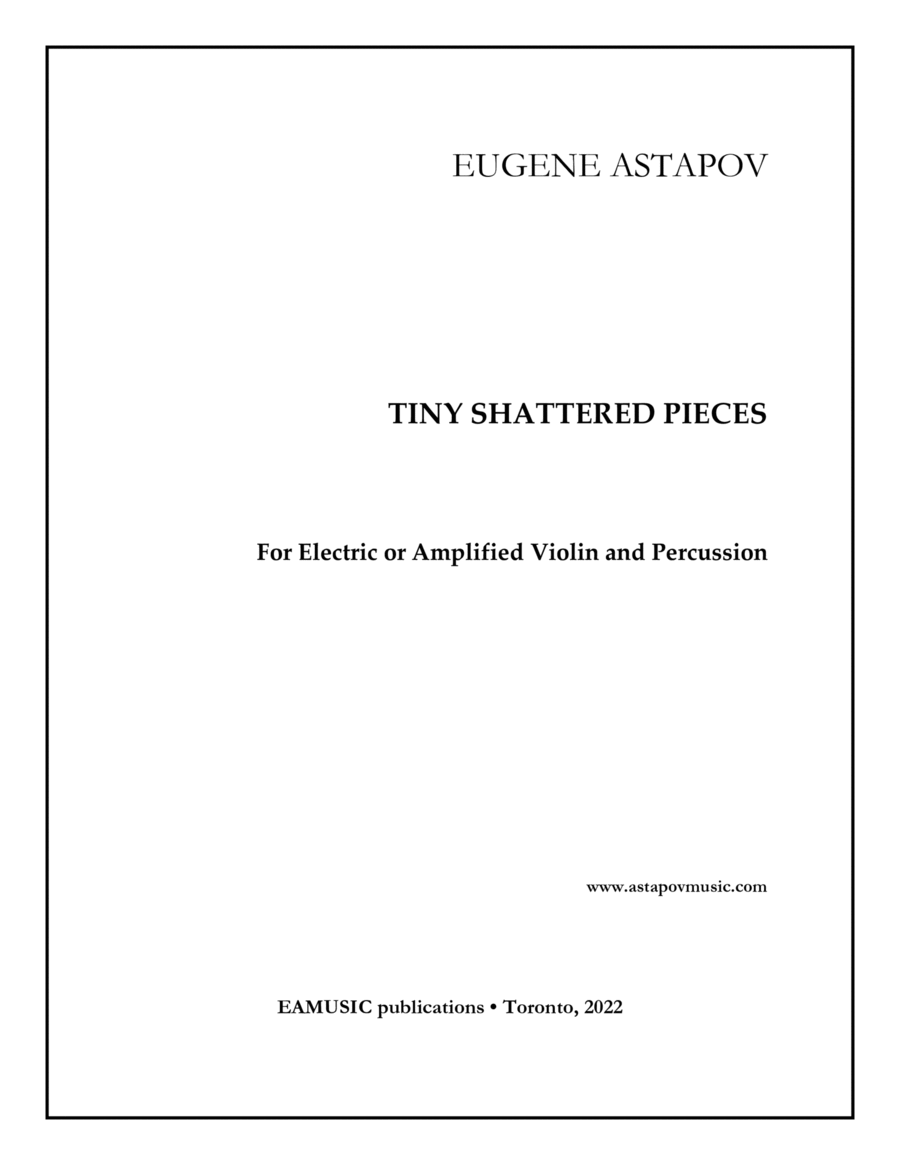Instrumental Duet,Percussion,Violin - Level 5 - Digital Download SKU: A0.1248663 By Evelyn Glennie. By Eugene Astapov. 21st Century,Chamber,Classical,Contemporary. 26 pages. EAMUSIC #843160. Published by EAMUSIC (A0.1248663). Composing Tiny Shattered Pieces was a truly immersive musical journey due to the sheer amount of time it took to write it and how much time I spent thinking about this piece. Since the work was commissioned before the start of the 2020 pandemic, but rescheduled for a premiere 2 years later – I could write, re-write and re-think this piece from start to finish multiple times. In the end there was enough material for a 30-minute composition, but so much of it was so different due to the different moods one would go through during a pandemic, that compiling it into 5 separate short musical statements was the most natural conclusion.   The music embarks on a journey of discovery, love, destruction, reconciliation, suffering, and by the end of it – war. Naturally at the end of a 2-year period a person evolves and goes through a myriad of different experiences, but few artists or composers experienced the world going through a tectonic shift from the early 2000s until now, therefore I felt it necessary to touch upon many different topics through the language of this work, including the personal and the universal. Each of the movements is a complete statement but together the movements form a larger pyramid-like structure, completing each other’s thoughts, propelling them and eventually bringing them to conclusion.    It should be noted that by the time I was reaching the end of the compositional process – a major war started with Russia invading Ukraine. Being a Ukrainian-born composer, the issue affected me deeply and sipped into the music by the end of the 4th movement. This is where the pyramid reaches its peak and should be appropriately shaped by the musicians.   The piece is approximately 10 minutes in duration and is to be performed with utmost freedom, gusto and conviction. The performers must not shy away from making the sounds crunch together, piercing through the hall, but at the same time the more quiet, gentle parts should be appropriately shaped and bring much needed comfort. The work is about contrasts, outbursts of emotions, quiet sobbing, rage and solitude.  The piece is approximately 12 minutes long. It was commissioned by Dame Evelyn Glennie in cooperation with Calgary's Land's End Ensemble.
